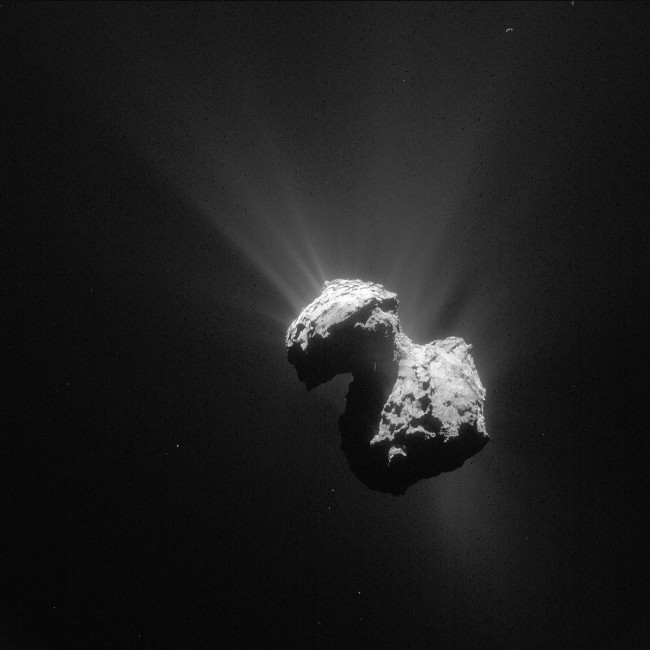Comet 67P releases its own oxygen into space
In 2015, scientists announced the discovery of oxygen molecules on comets 67P / Churyumov-Gerasimenko, based on the observations of Rosetta spacecraft. It is the mission's most unexpected discovery, changing our understanding of the formation of the Solar System.
While oxygen molecules are very popular on Earth, it is rarely found elsewhere in the universe. In fact, astronomers discovered oxygen outside the Solar System only twice, and never found it on a comet.
However, researchers are considering reconsidering this hypothesis, due to the opinion of a chemical engineer at Caltech, who is currently working on developing the microprocessor for the mission.
Constantine P. Giapis was intrigued by Rosetta's results because it showed that the chemical reaction that took place on the surface of comet 67P was very similar to what he had done in his lab for 20 years. by.

Panoramic picture of comet 67P / Churyumov-Gerasimenko was taken by Rosetta.(Photo: ESA / Rosetta / NAVCAM).
Giaet studied chemical reactions involving electrons or ions moving at high speeds, they collided with the semiconductor surface to develop faster computer chips and larger digital memory for the machine. count and phone.
Giapis said: 'I began to care about space and look for places where ions would be accelerated faster than the surface. After examining the measurements made on the comet of Rosetta, especially those related to the energy of water molecules colliding with comets, all I have been studying for years has happened. out on this comet '.
In a recent paper, Giapis and his co-author Yunxi Yaos proposed that molecular oxygen comets 67P are not ancient molecules, they are being produced by side interactions. in the comet is quite ambiguous, between water molecules flowing from comets and other particles scattered from the Sun.
"We have demonstrated experimentally that oxygen molecules can be formed on the surface of materials similar to those found on comets 67P," Mr. Yaos said.
Here's what is going on: Steam molecules emit from comets when it's heated by the Sun, water molecules become ionized by ultraviolet light from sunlight, and then the solar wind blows ionized water molecules back to the comet.

Oxygen molecules in comets 67P are not ancient molecules.
When water molecules come back and touch the surface with oxygen-containing materials such as sand and iron, they take an oxygen atom in it and combine it to form an O 2 molecule.
The researchers said in their article that 'this abiotic gas production mechanism is consistent with the trends of 67P which are reported from many previous observations of the spacecraft' , and 'advanced'. Our attention to the role of negative ions, not only comets but also other planets'.
This mechanism of oxygen formation can be expanded in many other cases. The researchers added: 'Understanding the molecular oxygen origin in space is important for the evolution of the universe and the origin of life on Earth.'
This finding shows that oxygen molecules not only exist in the atmosphere where there is liquid water, there is no need for life to be able to form oxygen molecules, oxygen can be formed in a non-human way. biology in space. Researchers believe this finding may affect how to look for signs of life on future planets.
- Video: Comet hit the sun
- First detected oxygen on comets
- Century comets
- Announcing the path of comet 67P
- Comet Lovejoy set great merits
- First measurement of comet temperature
- Comet - the mystery of the universe
- Comet detection is the brightest century
- Awaken the comet 'hunter'
- Comet near Mars on sight
- Comet is brighter than the full moon visiting Earth in 2013
- Comet ISON only has dust left
 Van Allen's belt and evidence that the Apollo 11 mission to the Moon was myth
Van Allen's belt and evidence that the Apollo 11 mission to the Moon was myth The levels of civilization in the universe (Kardashev scale)
The levels of civilization in the universe (Kardashev scale) Today Mars, the sun and the Earth are aligned
Today Mars, the sun and the Earth are aligned The Amazon owner announced a secret plan to build a space base for thousands of people
The Amazon owner announced a secret plan to build a space base for thousands of people